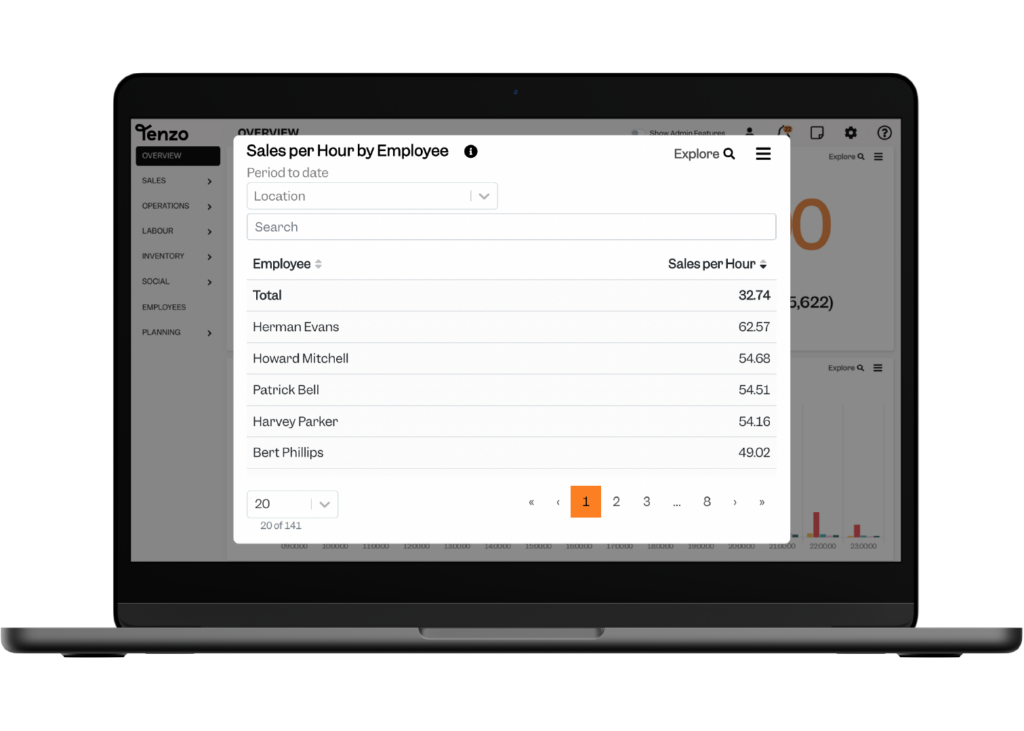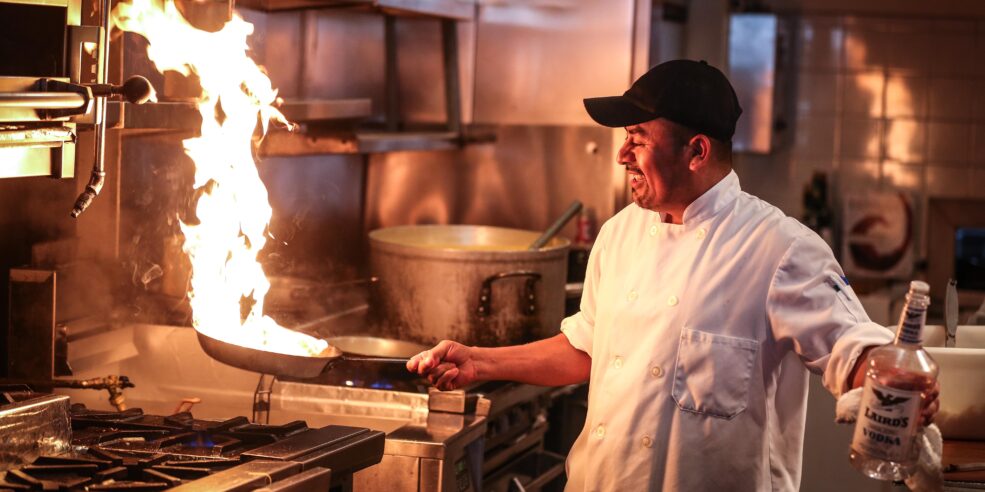Are you looking for ways to boost labour productivity in your hospitality business?
To ensure the financial success of your restaurant, it is crucial to maximise labour productivity.
In this article, we will discuss the changing landscape of labour in the industry, the impact of staff turnover and labour costs, methods to measure labour productivity, and how tracking employee performance can lead to overall restaurant success.
Look strategically at who you’re rostering and when. You need the best people in places at the busiest times, it’s much easier than training people. Focus on rostering people who can make you the most money. – Scot Turner, MD and Founder at Auden Hospitality

How Labour in the Hospitality Industry Has Changed
The hospitality industry has seen significant changes in labour since the pandemic and the rising use of technology.
The transient nature of the industry has become more apparent, and the industry is increasingly less experienced with younger people viewing it as an in-between job. Especially as many small businesses can’t keep up with the increasing salary demands for experienced employees.
The introduction of technology has also changed the processes involved with operating restaurants: the expectations and goals for many restaurants are now more concrete. Technology has also become a key aspect of monitoring labour productivity.
Staff Turnover
Staff turnover is a major challenge for restaurants in the hospitality industry. It can be difficult to retain employees, especially in positions that require long hours and high levels of customer service. It can be difficult to find and retain staff members, which can lead to increased costs (for recruitment and training).
External factors can also impact the employment pool and how people view jobs in the hospitality industry. For example, the current job market may offer more opportunities for individuals outside of the hospitality industry, making it easier for them to find alternative employment. The impact of this is increased with some people viewing jobs in the hospitality industry as temporary or low-skilled, leading to higher turnover rates. Hospitality Rising and UK Hospitality are working together to change this perception and encourage more young people into the industry, but this will take time.
Businesses need to take charge of improving this by offering developmental opportunities for younger people joining the hospitality industry and allowing them to envision long-term careers. Good examples of this are the Pizza Pilgrims Training Academy or Otolo with their mentorship programme.
Labour Costs
Labour costs can have a significant impact on a company’s profitability. Generally, labour costs should be around 30% of a restaurant’s revenue, but this can change depending on the type of restaurant.
As inflation rises, the cost of wages and benefits expectation for employees also increases. This puts pressure on profit margins, as restaurants need to allocate more resources to cover these rising costs.
How to Track Labour Performance
To boost labour productivity, it is crucial to track labour performance. By monitoring and evaluating each employee’s performance, you can identify improvement areas and provide targeted training. This allows you to address specific weaknesses and help employees develop the necessary skills to excel in their roles.
The methods used to track employee performance may vary depending on where employees’ work is focused and their seniority within the organisation. For example, front-of-house may have their performance measured based on their sales targets, while managers may be evaluated on their ability to lead and motivate their teams. By tailoring the tracking methods to each employee’s specific role and responsibilities, you can gain a more accurate understanding of their performance and provide relevant feedback and support.
Qualitative Tracking
For senior stakeholders, observing junior staff members can be a valuable method for tracking their performance. By directly witnessing their actions and interactions with customers, you can gain a better understanding of their capabilities. This qualitative tracking allows you to see firsthand how they handle different situations and whether they meet the expectations of their role.
Customer feedback can also provide valuable insights into the performance of your employees. By listening to what customers have to say about their interactions with your staff, you can gain a better understanding of their strengths and weaknesses. This feedback can help you identify areas where your employees excel and areas where they may need further training or support.
In addition to observing and gathering feedback, engaging in regular conversations with your junior staff members can also provide valuable qualitative insights. By discussing their experiences, challenges, and goals, you can gain a deeper understanding of their performance and provide guidance and support where needed. These conversations can also help you identify any potential issues or areas for improvement before they become larger problems.
Quantitive Tracking
Quantitative tracking is a more data-driven approach to monitoring labour performance. By analysing specific metrics and numbers, you can gain a clearer understanding of how each employee is contributing to the overall productivity of your restaurant. This type of tracking can be especially useful in measuring sales abilities, as you can track the average transaction value (ATV) for each employee and identify areas for improvement.
By setting specific goals or key performance indicators (KPIs) for employees, you can use quantitative tracking to see how well they are meeting these targets. This provides a way to reward and recognise employees who consistently meet or exceed their goals.
Quantitative tracking provides a more objective and data-driven way to monitor employee performance. By analysing specific metrics and numbers, you can gain valuable insights into how each employee is contributing to the success of your restaurant and identify areas for improvement.
It is, however, important to note that data can only get you so far. Not all productivity can be measured with numbers as it’s not all quantifiable. Interactions between team members, and the customers, can have a huge impact on morale and productivity.
How Boosting Labour Performance Boosts Overall Restaurant Success
Improving labour performance directly contributes to the overall success of a restaurant. When employees perform at their best, customer satisfaction increases, leading to repeat business and positive word-of-mouth recommendations. This, in turn, can drive higher revenue for the restaurant.
Staff Experience
Boosting the staff experience is essential for creating a positive work environment. By tracking labour performance, you can identify areas where individuals excel and provide them with opportunities to further develop their skills. This not only boosts morale but also drives overall team development.
Tracking employee performance also allows you to recognise and reward high performers, which can help boost morale and motivation within the workforce. By acknowledging and celebrating the achievements of your team, you create a culture of excellence and encourage others to strive for similar success.
Tracking labour performance also allows you to identify areas where additional training or support may be needed. By providing targeted coaching and development opportunities, you can help employees grow and reach their full potential. This investment in staff experience not only benefits employees but also contributes to the overall success of the team and the business.
Controlling Costs and Boosting Performance
Tracking labour performance allows businesses to identify their top performers in real time and provide staff with incentives to upsell and increase sales. This can result in higher revenue and profitability for the company.
Improving labour productivity also means reducing the overall labour costs as a percentage of sales. By analysing employee performance data, businesses can identify areas where productivity can be improved and make necessary adjustments. This can lead to more efficient use of resources and employees’ time, ultimately improving the bottom line.
By tracking labour performance and improving labour productivity, businesses are getting more out of their data. This means they can make better-informed decisions and optimise their operations. This can result in increased efficiency, reduced costs, and ultimately, improved overall performance for the business.
Conclusion
In conclusion, tracking labour performance is crucial in boosting labour productivity in the hospitality industry.
Labour costs only allow restaurants to focus on one aspect of staff management, and can negatively impact the performance of the business. Focusing on productivity means restaurants can manage the performance of their staff, to boost overall restaurant performance whilst controlling costs.
By monitoring and evaluating labour performance, businesses can identify areas for improvement and implement strategies to enhance productivity. This not only improves overall restaurant success but also provides a better staff experience.





